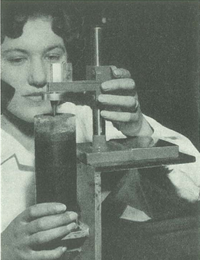

Fall Cone Test
Welcome to the Fall Cone Test platform!
Here, you’ll explore essential information about the test procedure, relevant regulations, literature, and an interactive liquid limit calculator. Dive in and discover the geotechnical insights you seek.

Test Principles
History
History
The fall-cone test was an experiment initially conceived by the Geotechnical Commission of the Swedish State Railways between 1914 and 1922, to determine the undrained shear strength of clayey soils. This study was documented in Olson's report (1921). Therefore, it is inferred that the initial contributions of this methodology stem from this line of study. However, numerous studies mention Vasiljev (1949) as the first attempt to standardize the method. Based on this, the background of this test could be older than the traditional Casagrande's liquid limit test (1932) itself. This technique was initially designed to obtain the liquid limit in clays, but it also clearly serves as a test based on the shear strength of the material.Returning to the Swedish original work, the conclusions of this study mentioned, for the first time, masses and dimensions of cones (100 g - apex 30°, 60 g - 60°, and 10 g - 60°). This was the first evidence that the relationship between soil strength and the potential energy of the cone causing penetration in the soil, due to free fall, was discussed. Sowers et al. (1960). At right a photograph of what could be the first fall-cone test device (Hansbo, 1957)





